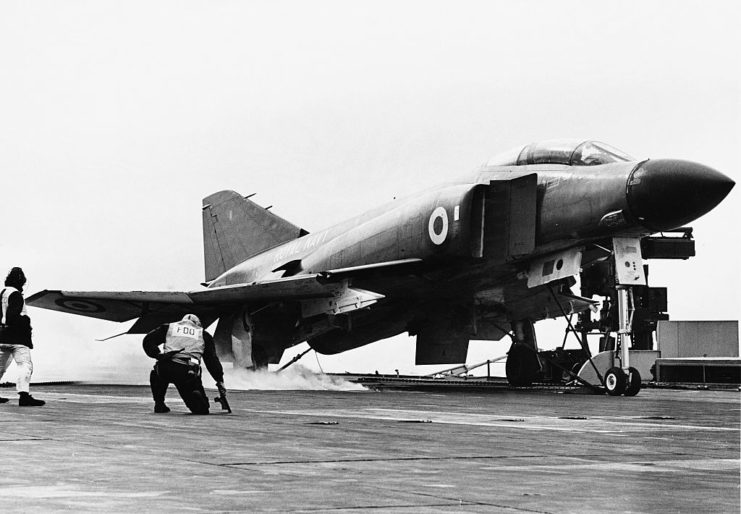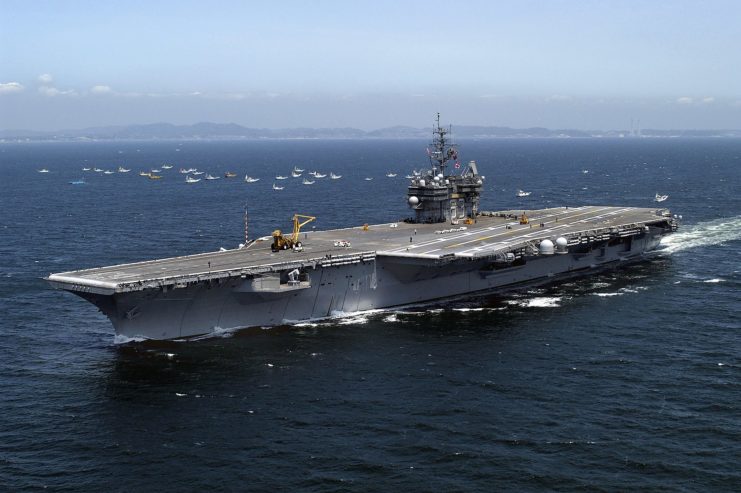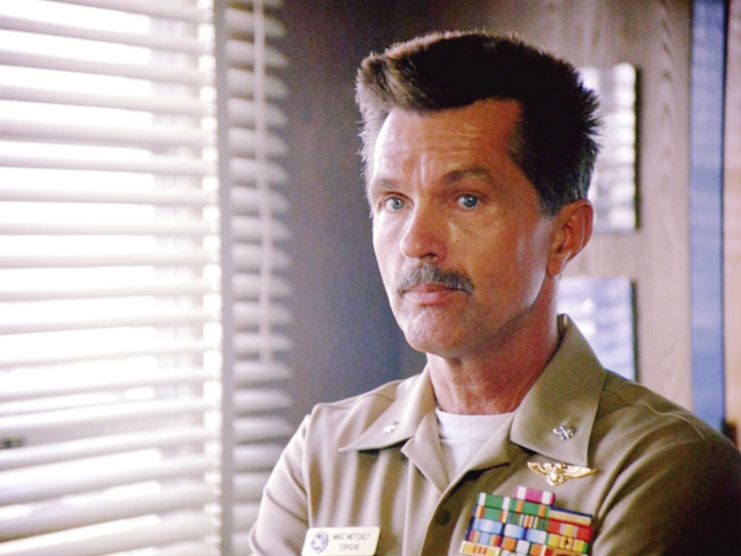Top Gun debuted in May 1986, captivating audiences with its unique draw. The film, polished and flashy, provided a new perspective on the US Navy that led military recruiters to set up booths outside theaters. A key factor in the movie’s lasting influence was its authentic portrayal of history, largely due to Rear Adm. Pete Pettigrew, known as ‘Viper,’ who devoted a lot of time and effort to ensure its accuracy.
Pete Pettigrew’s military career

Prior to becoming an adviser on the first Top Gun film, Pete Pettigrew had an impressive career in the military. He began his service in the US Naval Reserve, and became a naval aviator in 1966. He completed Fleet Replacement Training with Fighter Squadron 121 (VF-121) and reported to Fighter Squadron 151 (VF-151), with whom he served two combat 10-month tours in Vietnam onboard the USS Coral Sea (CV-43), flying McDonnell Douglas F-4 Phantom IIs in missions against Russian MiGs.
Operation Rolling Thunder, the 1965-68 US bombing mission against the North Vietnamese, was considered a failure and prompted the Navy to return to the drawing board and figure out how to best help its pilots be more successful. The decision was made to open the TOPGUN school – then the Navy Fighter Weapons School – where up-and-coming aviators could learn the tactics that would help them in the air.
The US Navy’s TOPGUN school

Following his deployments to Vietnam, Pete Pettigrew came back to San Diego. As a leading Navy fighter pilot, he took on the role of an instructor at the Navy Fighter Weapons School, where he trained pilots in both air-to-air and air-to-ground combat from 1969 to 1972.
A sign at Naval Air Station (NAS) Miramar, the location of the training, noted, “The four-week course started with a team of instructors covering US and Soviet aircraft types, weapons systems, and fighter training tactics in a 50-foot-long metal trailer at [Naval Air Station] Miramar.”
Pete Pettigrew’s service, Post-TOPGUN school

In 1972, Pettigrew returned to Vietnam and served aboard the USS Kitty Hawk (CV-63) with Carrier Air Wing II. That May, he and his wingman confronted four MiG-21s piloted by North Vietnamese forces. Despite the tough odds, they succeeded, each securing an aerial kill. This achievement made Pettigrew the sole former TOPGUN instructor to score a kill in Vietnam. Furthermore, many of his students also achieved victories during the war.
A career in film soon came calling

During the production of Top Gun, director Tony Scott and producers Don Simpson and Jerry Bruckheimer prioritized accuracy. They enlisted a TOPGUN instructor, Pete Pettigrew, to ensure authenticity, forging a lasting partnership with Paramount Pictures.
Pettigrew collaborated with Paramount Pictures from 1983 to 1986 and even had a cameo in Top Gun, portraying the date of Kelly McGillis‘ character, Charlotte “Charlie” Blackwood, in a scene where Tom Cruise‘s Lt. Pete “Maverick” Mitchell tries to woo her.
Additionally, Tom Skerritt’s character, nicknamed “Viper,” draws inspiration from a real-life pilot and is based in part on him.
Pete Pettigrew’s legacy

When Pete Pettigrew ended his Navy career in 1998, he’d participated in over 375 combat missions in Southeast Asia, culminating in over 3,400 hours flying fighter aircraft. For his service, he was awarded a number of decorations: the Joint Superior Service Medal, two Navy Commendation Medals, 30 Air Medals, the Silver Star, the Distinguished Flying Cross, the Legion of Merit with Gold Star, two Meritorious Service Medals and the Defense Meritorious Service Medal.
More from us: The Five Greatest Fighter Aircraft Ever Flown By the US Military
New! Want to become a trivia master? Sign up for our War History Fact of the Day newsletter!
The retired naval aviator soon threw himself into triathlons and was a master swimmer. In 2014, he and a team of other men set the record for the fastest swim over the Catalina Channel for those over 70 years old. During a speech to students at Menlo College the following year, he advised:
“The doors are open in your life. Don’t be afraid to go through them. No decision is still a decision, so don’t be afraid you will fail. The more you succeed, the easier it will be to walk through a doorstep. Watch for the doors.”
